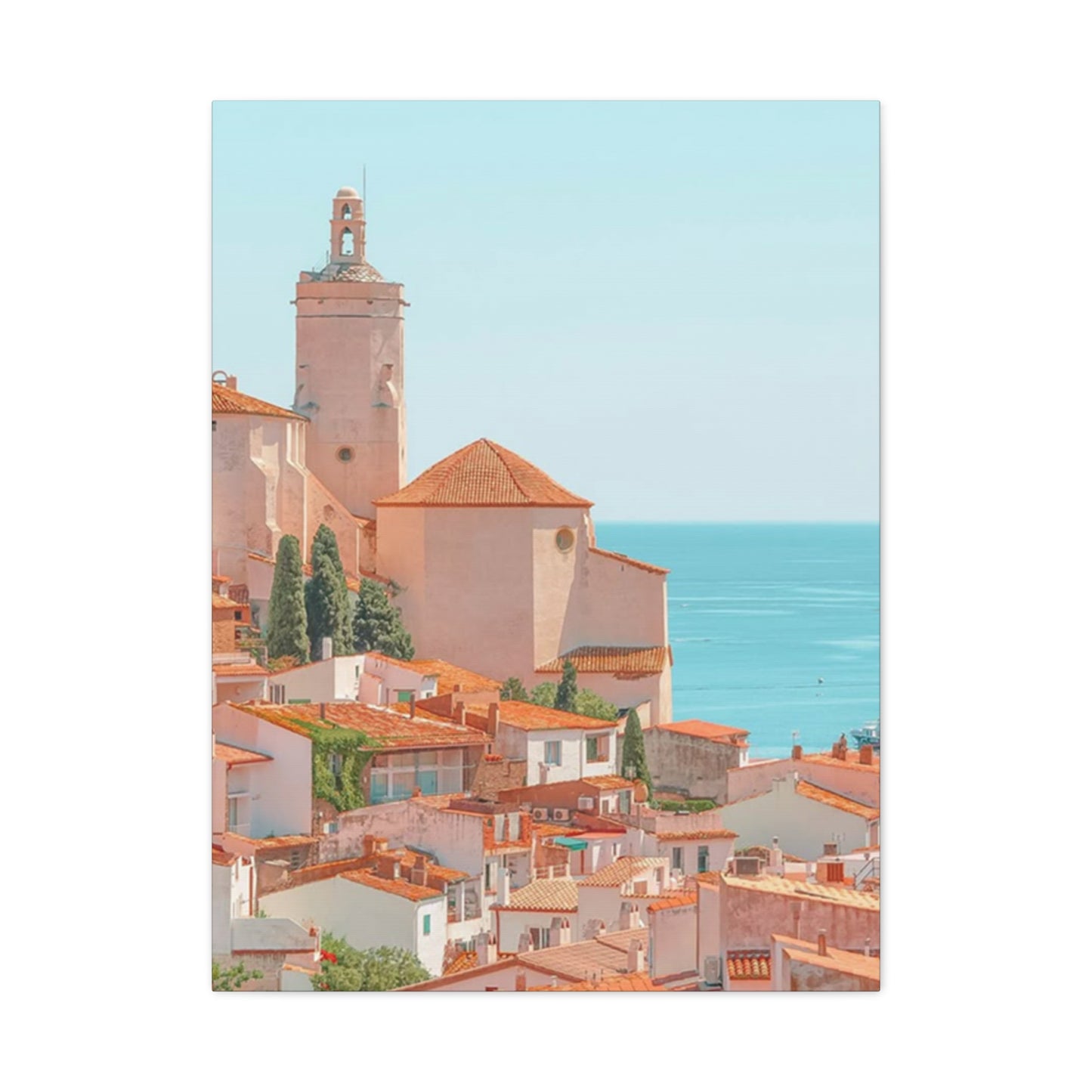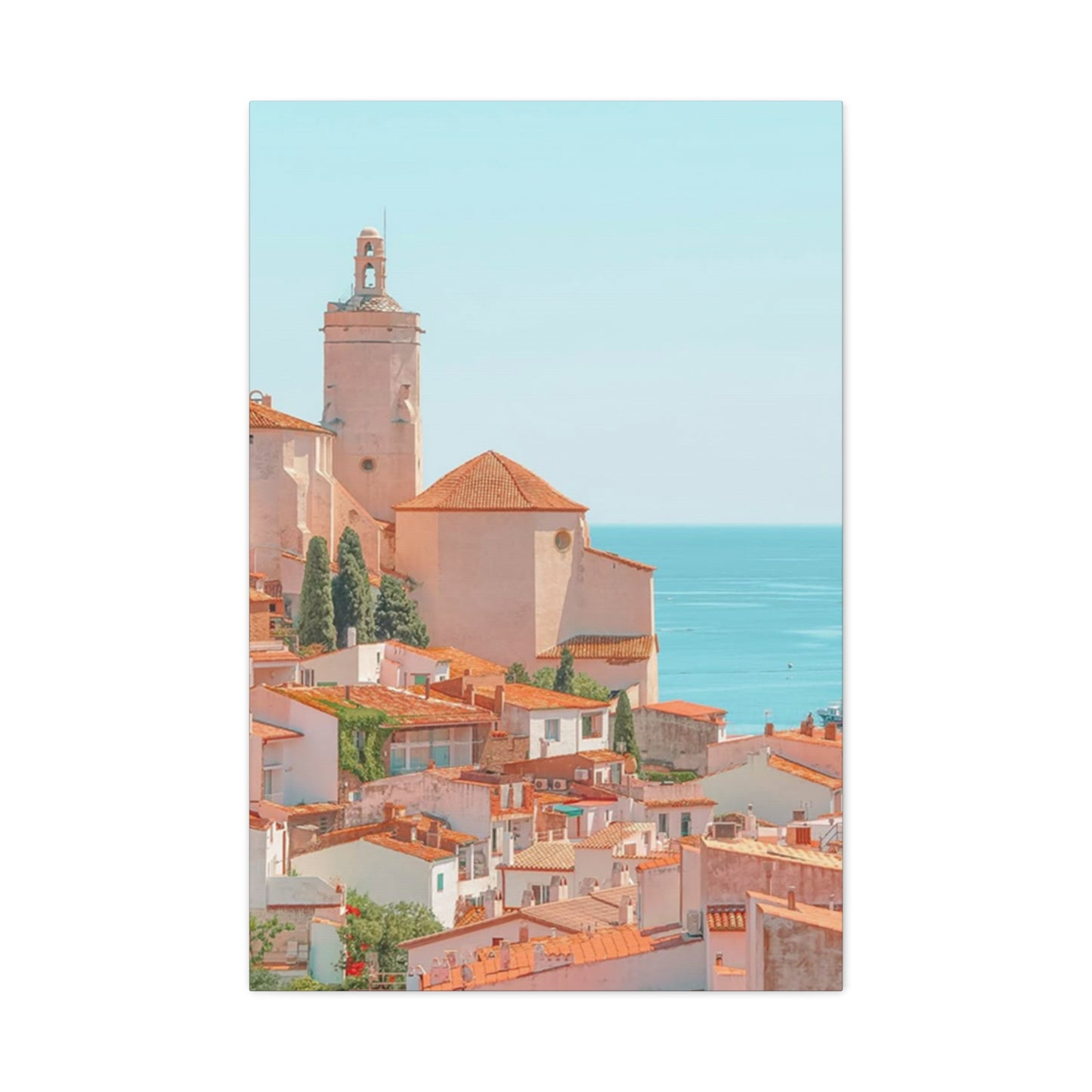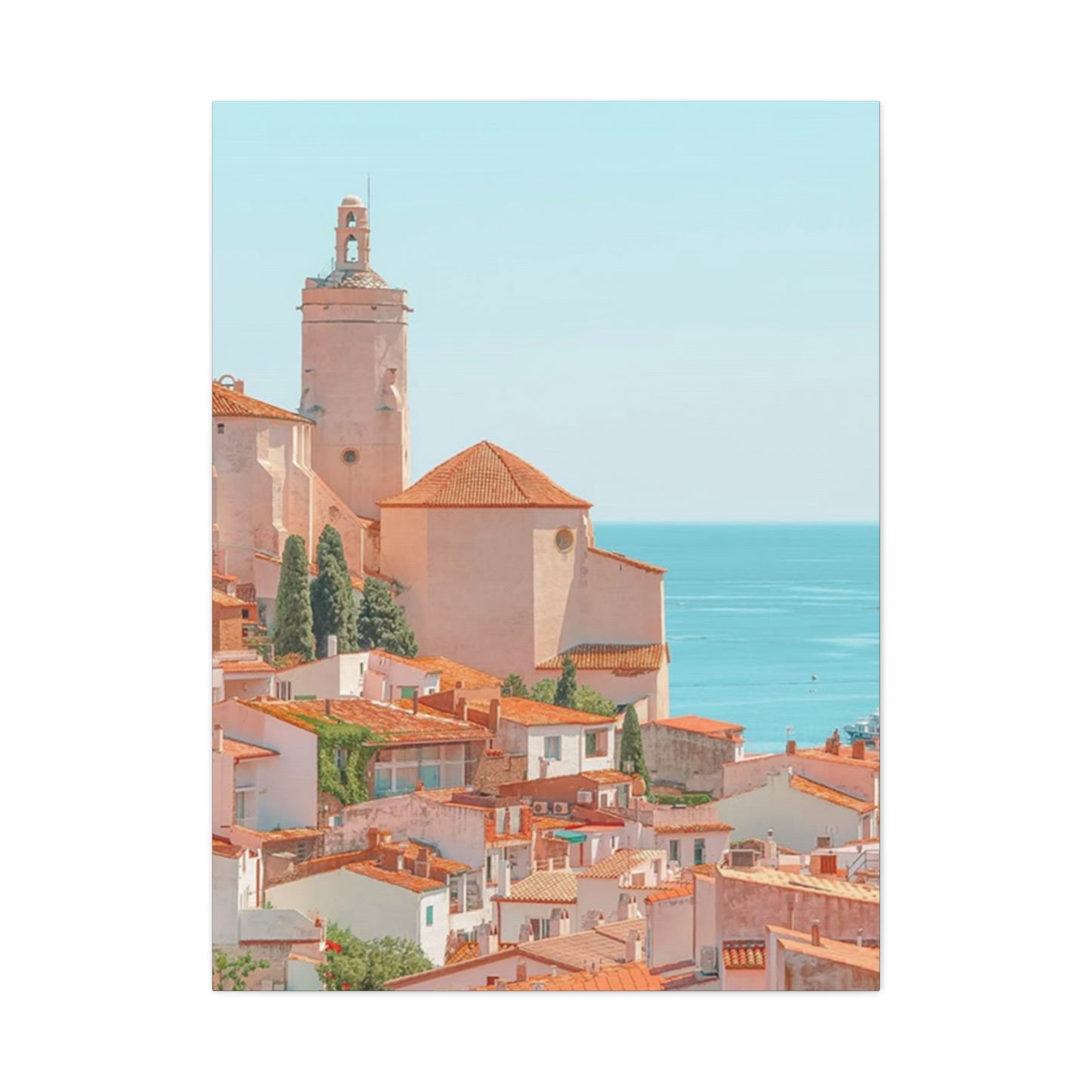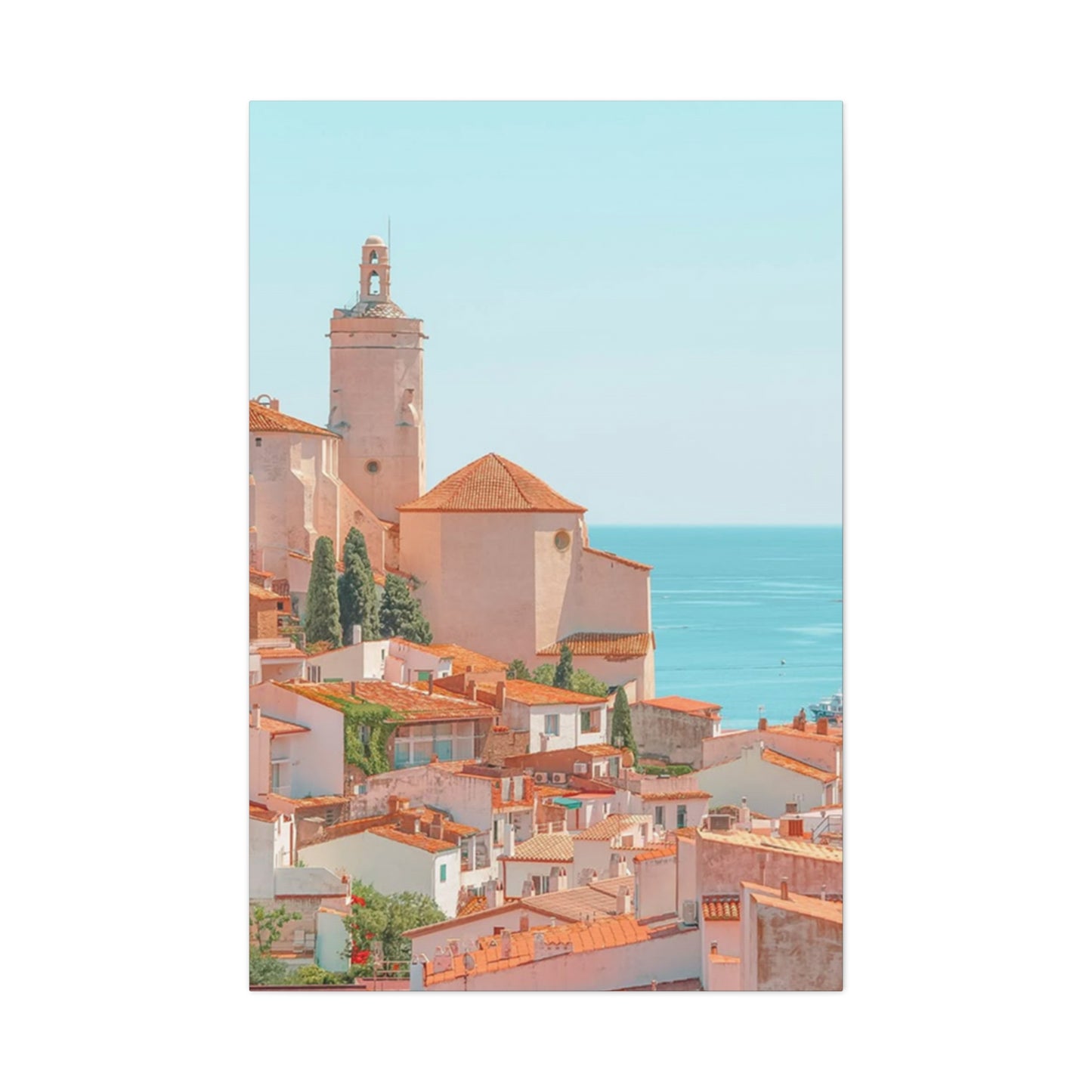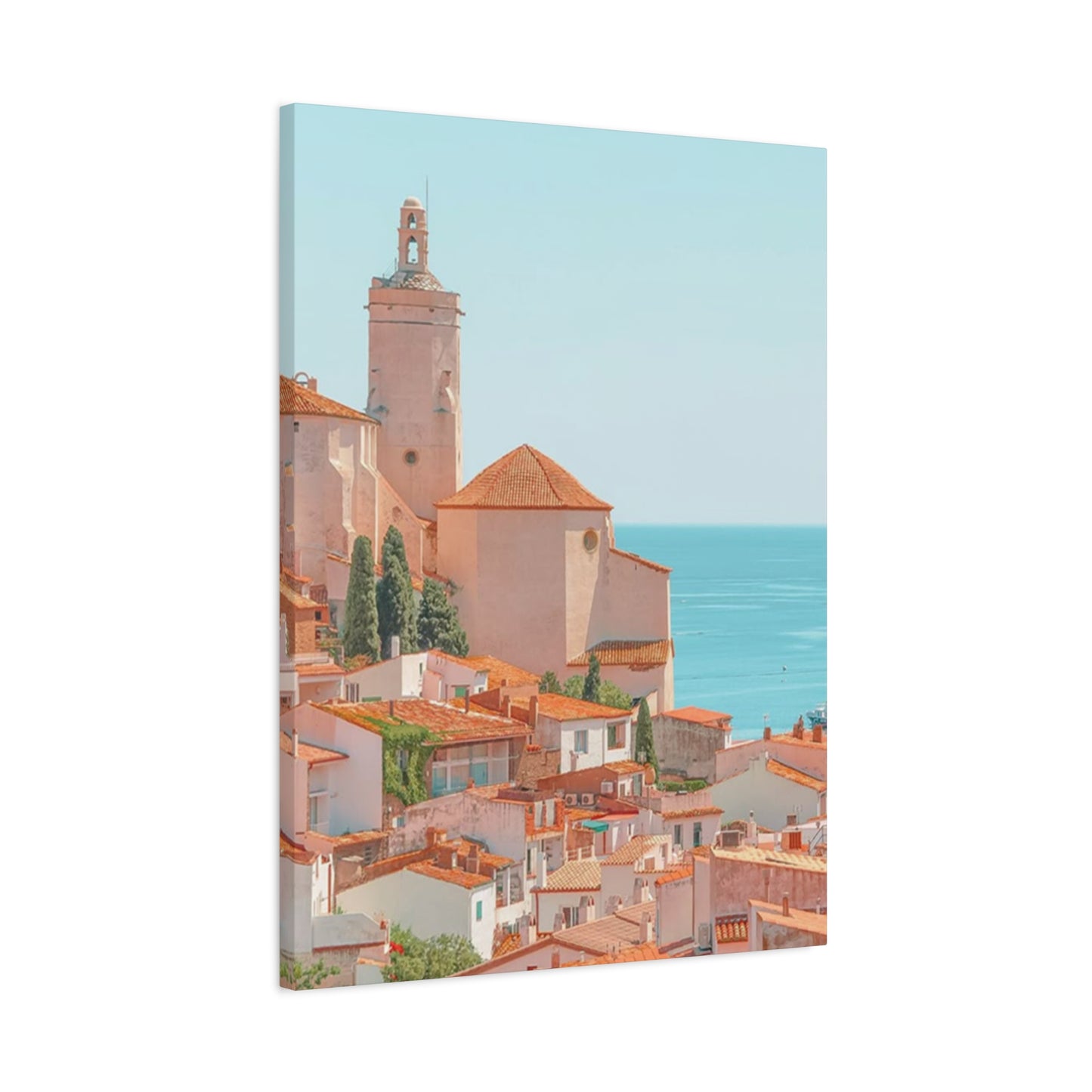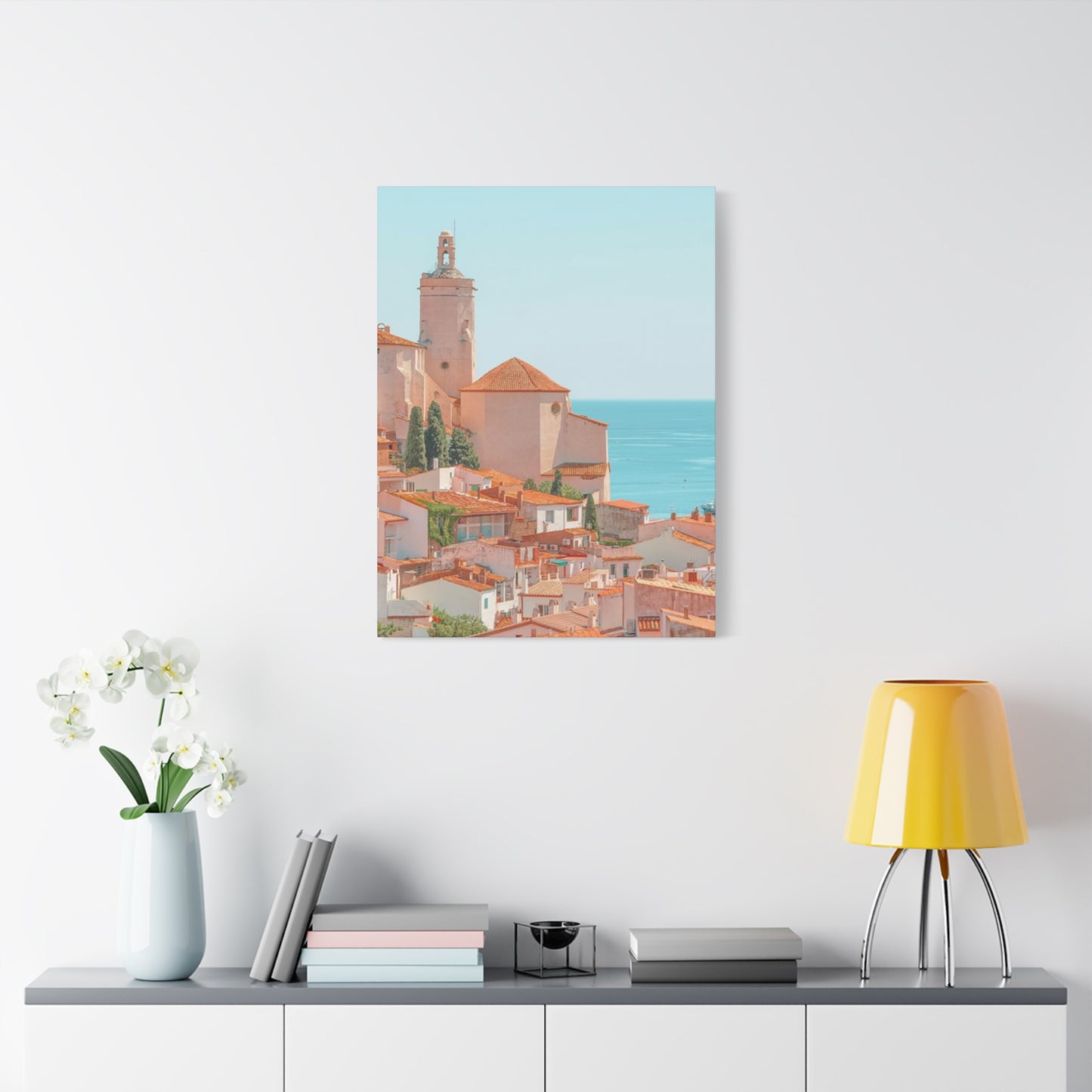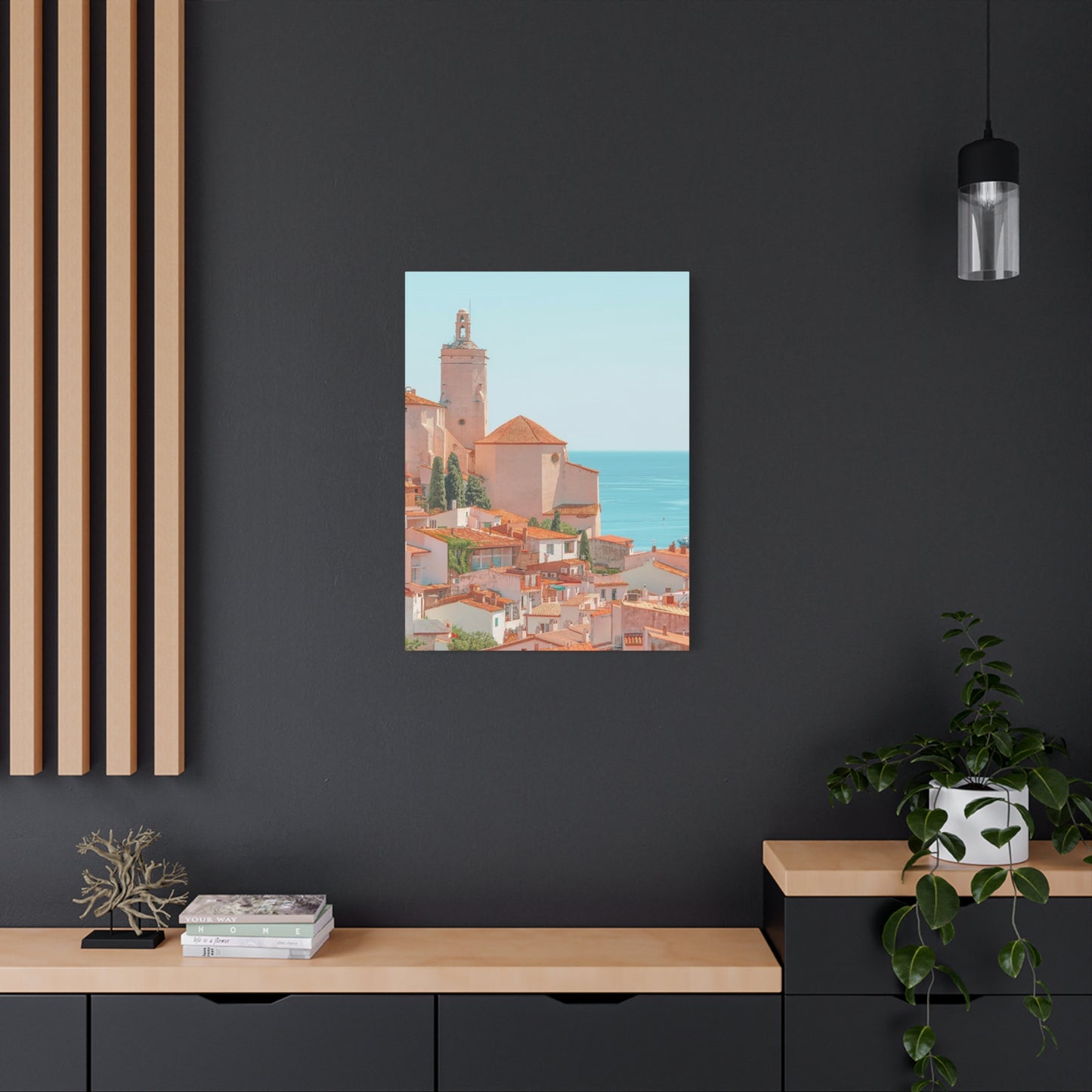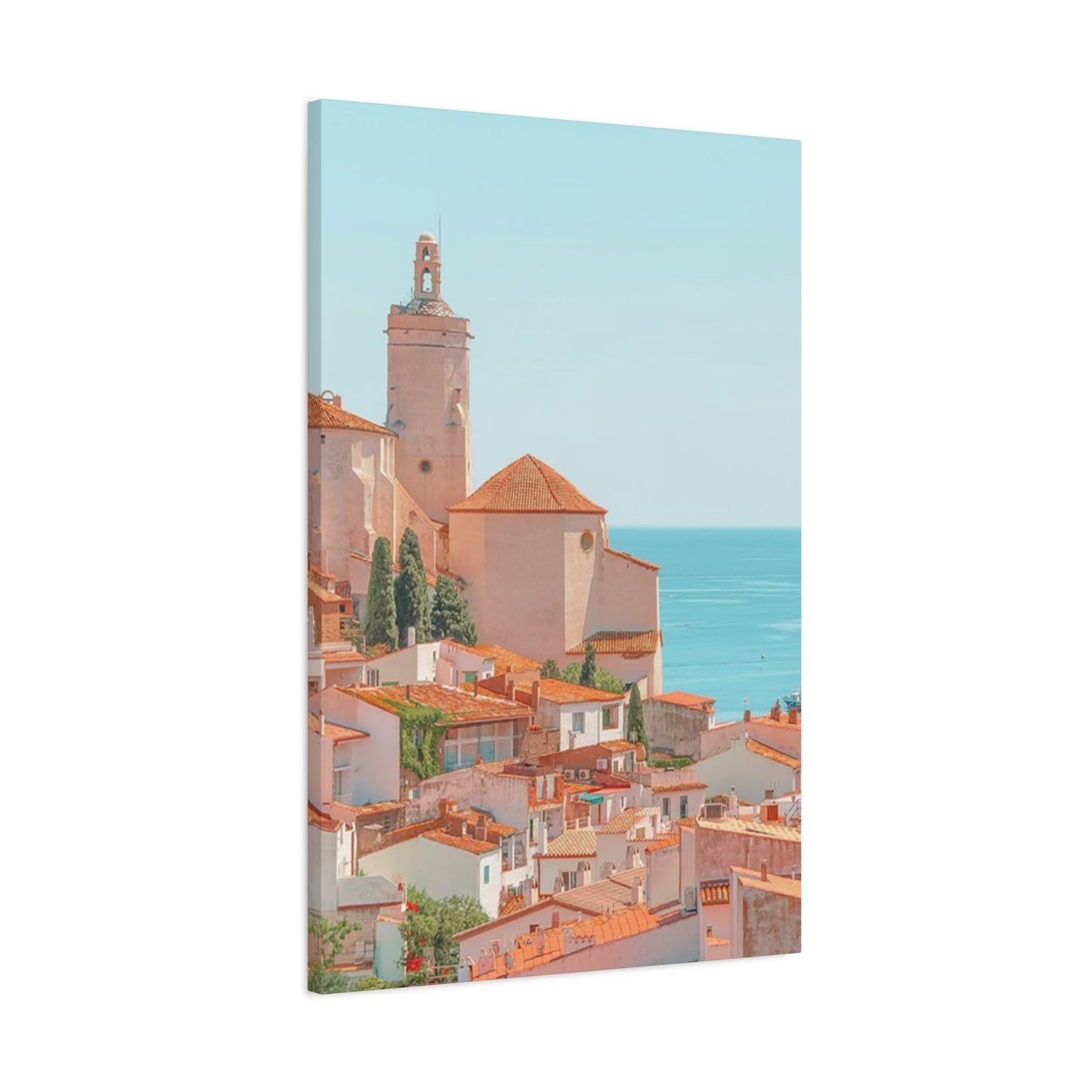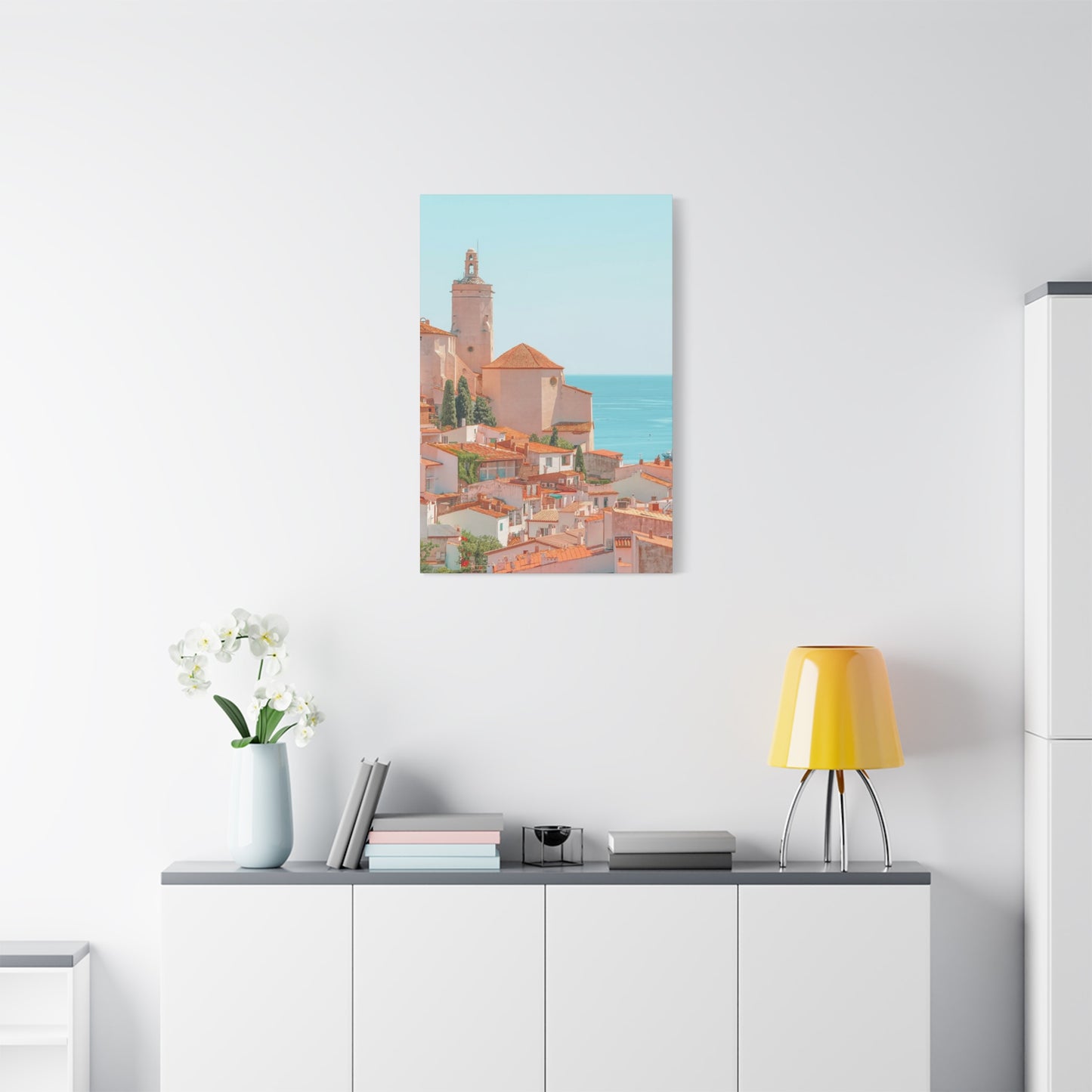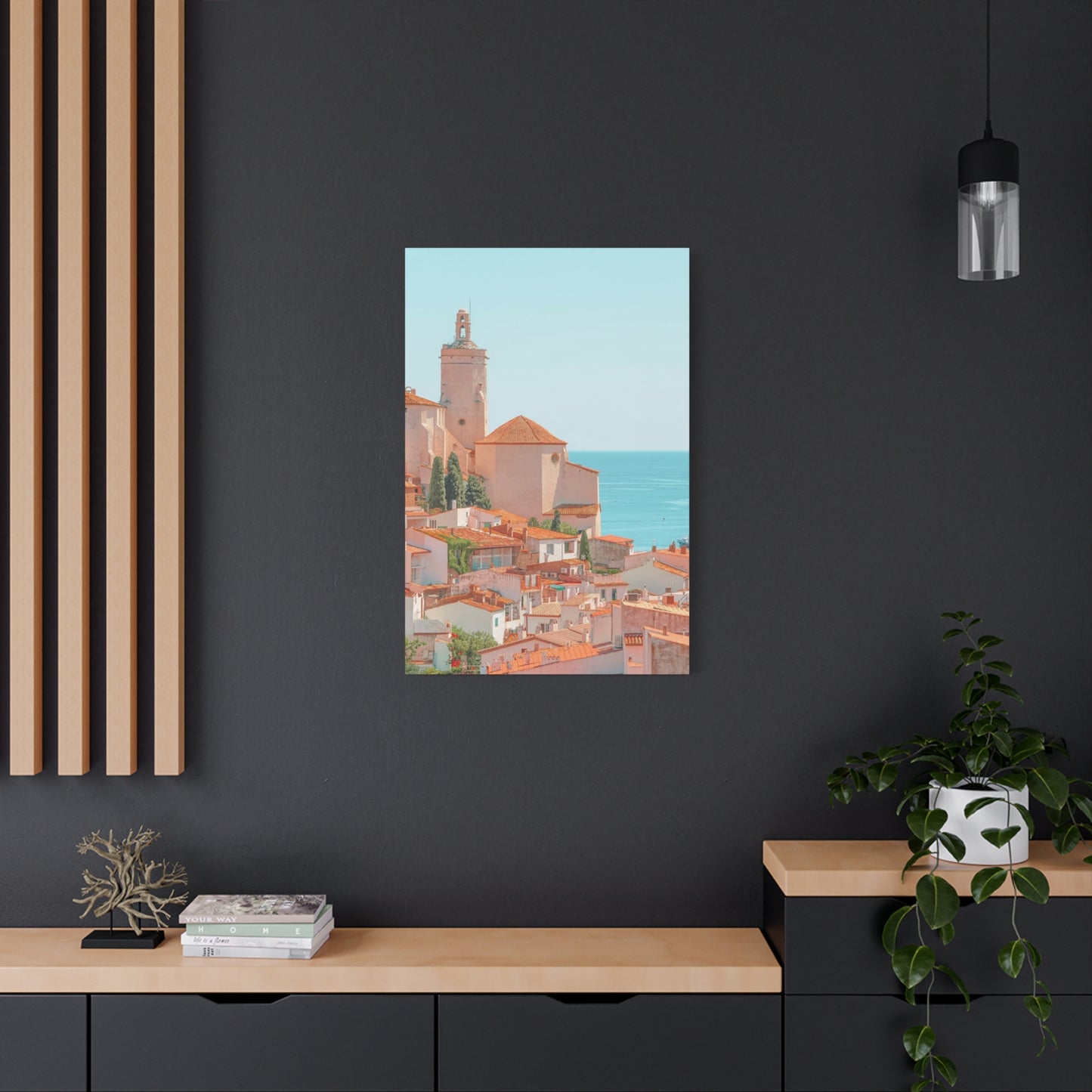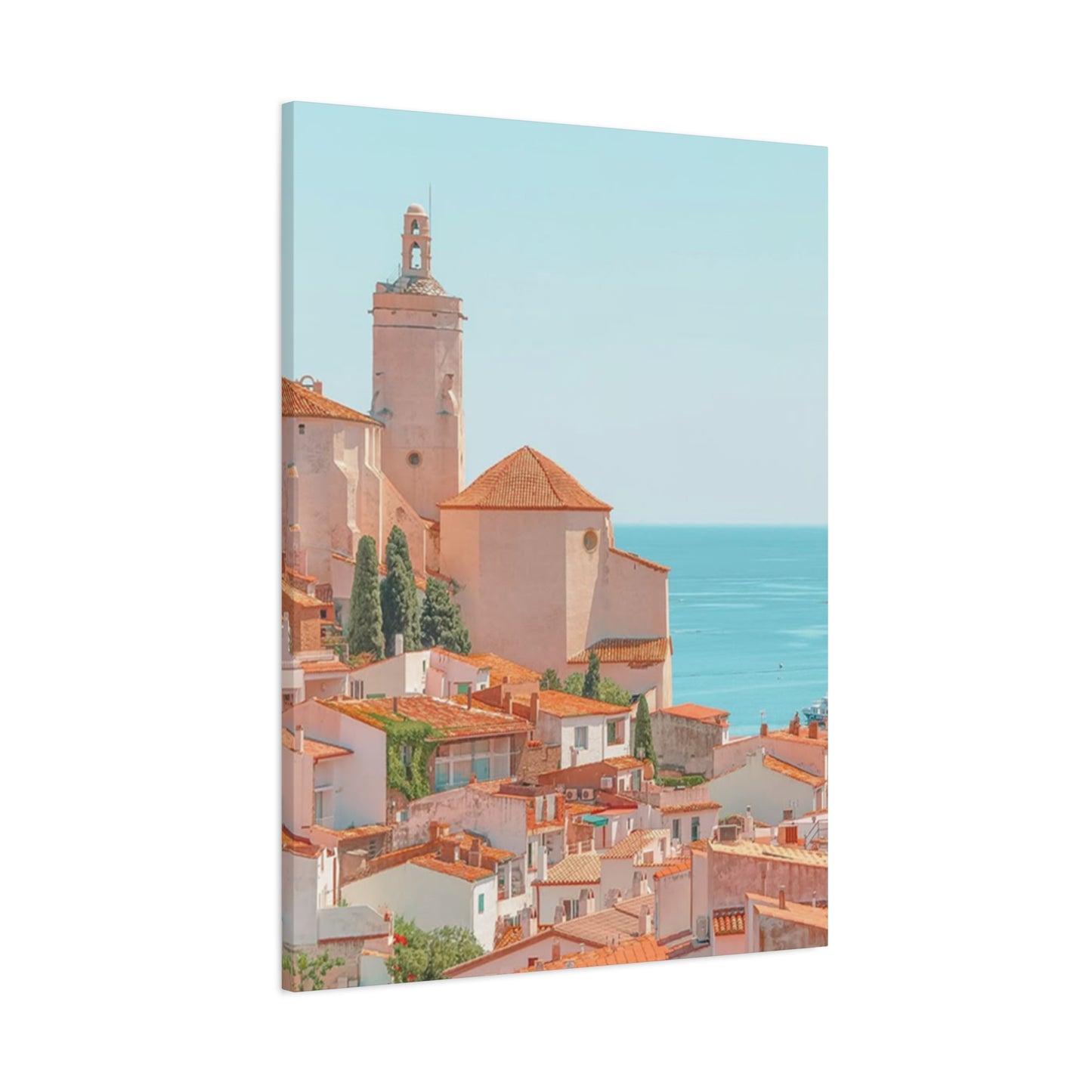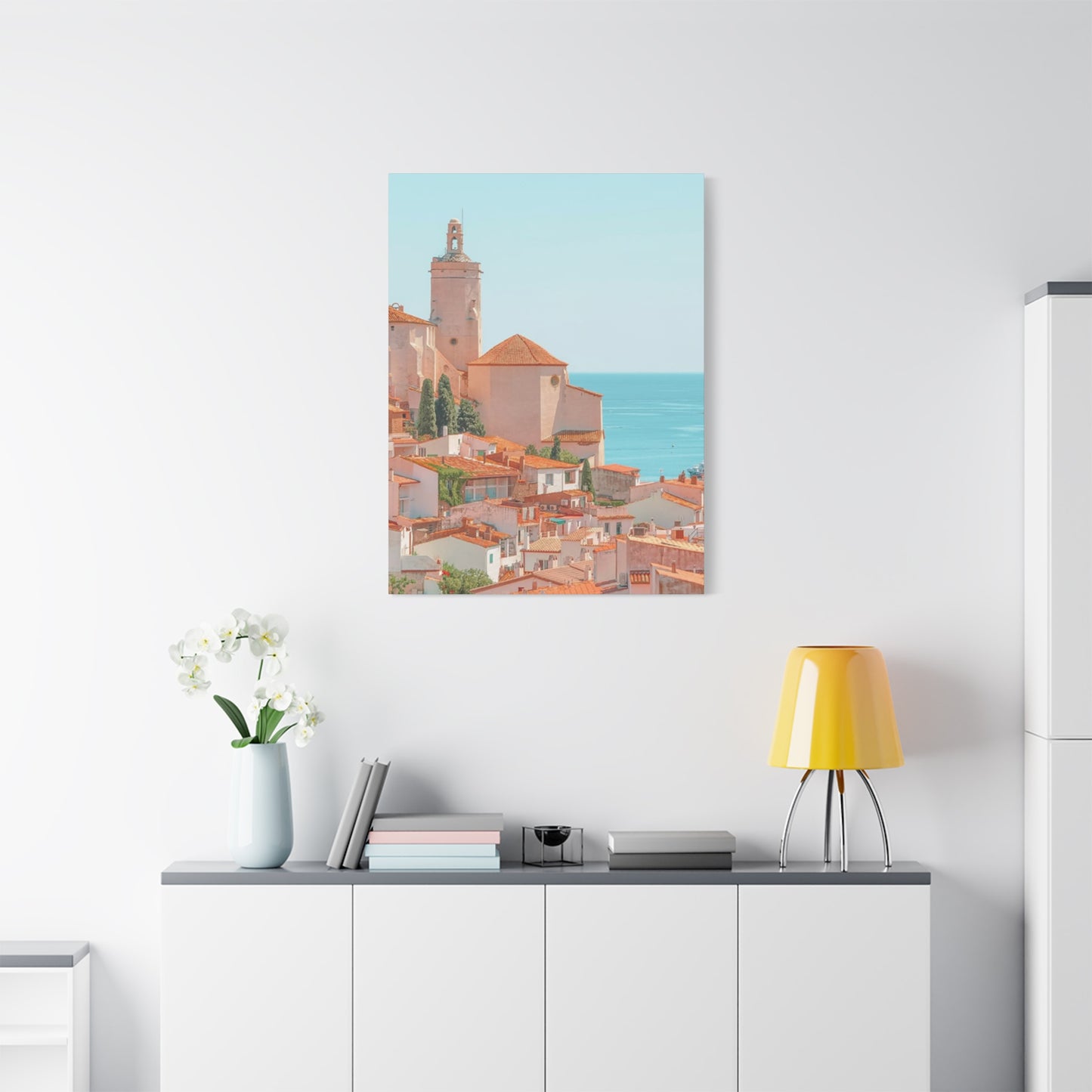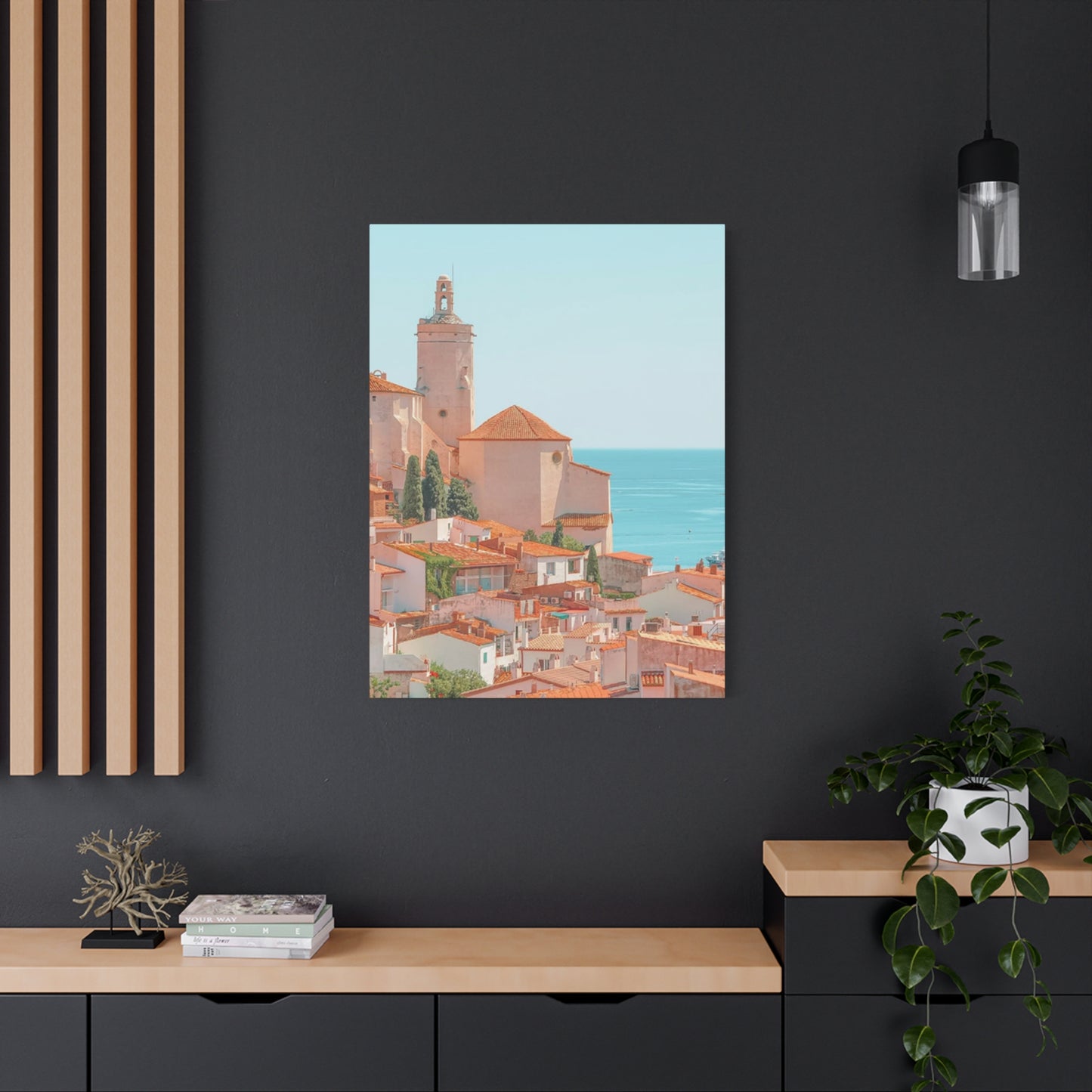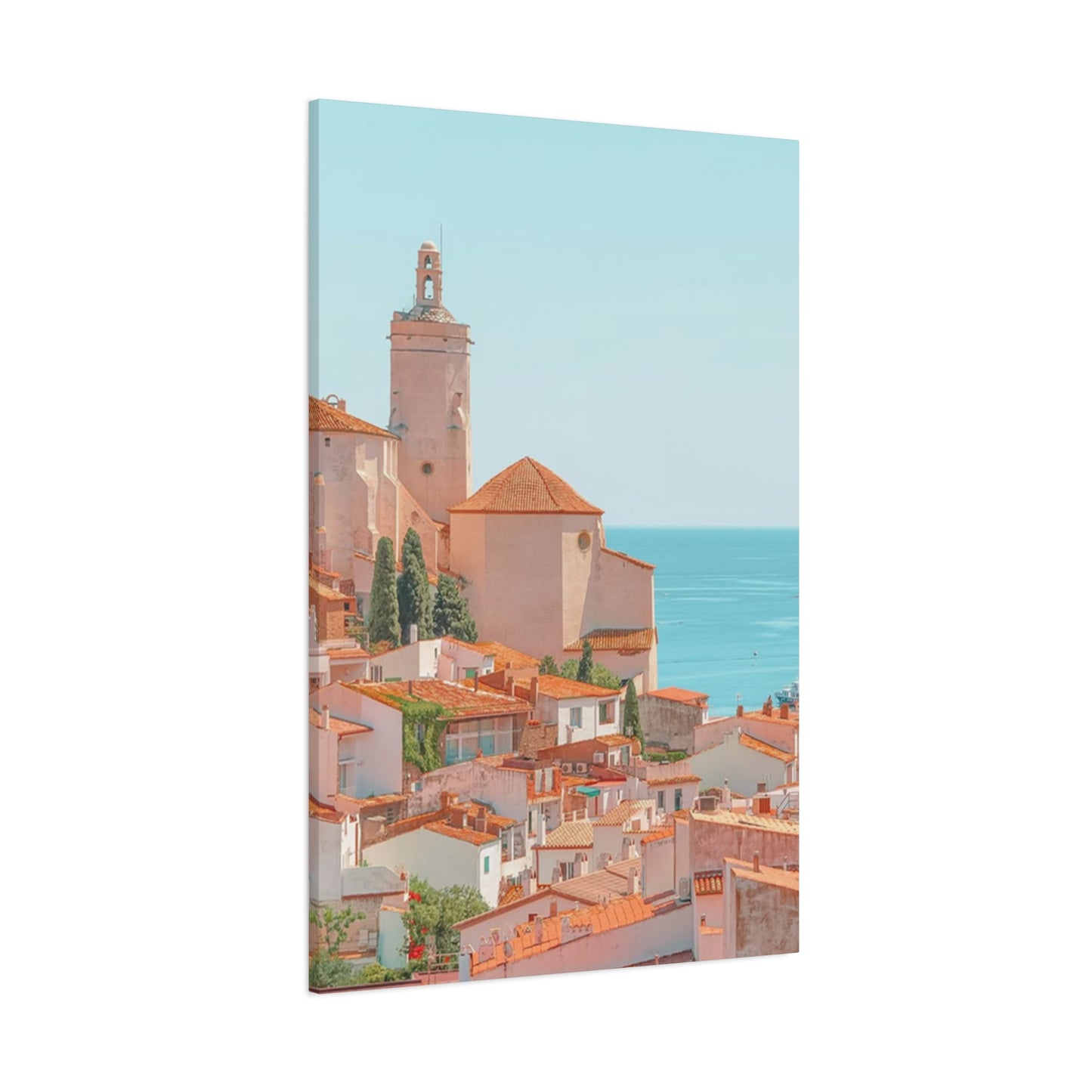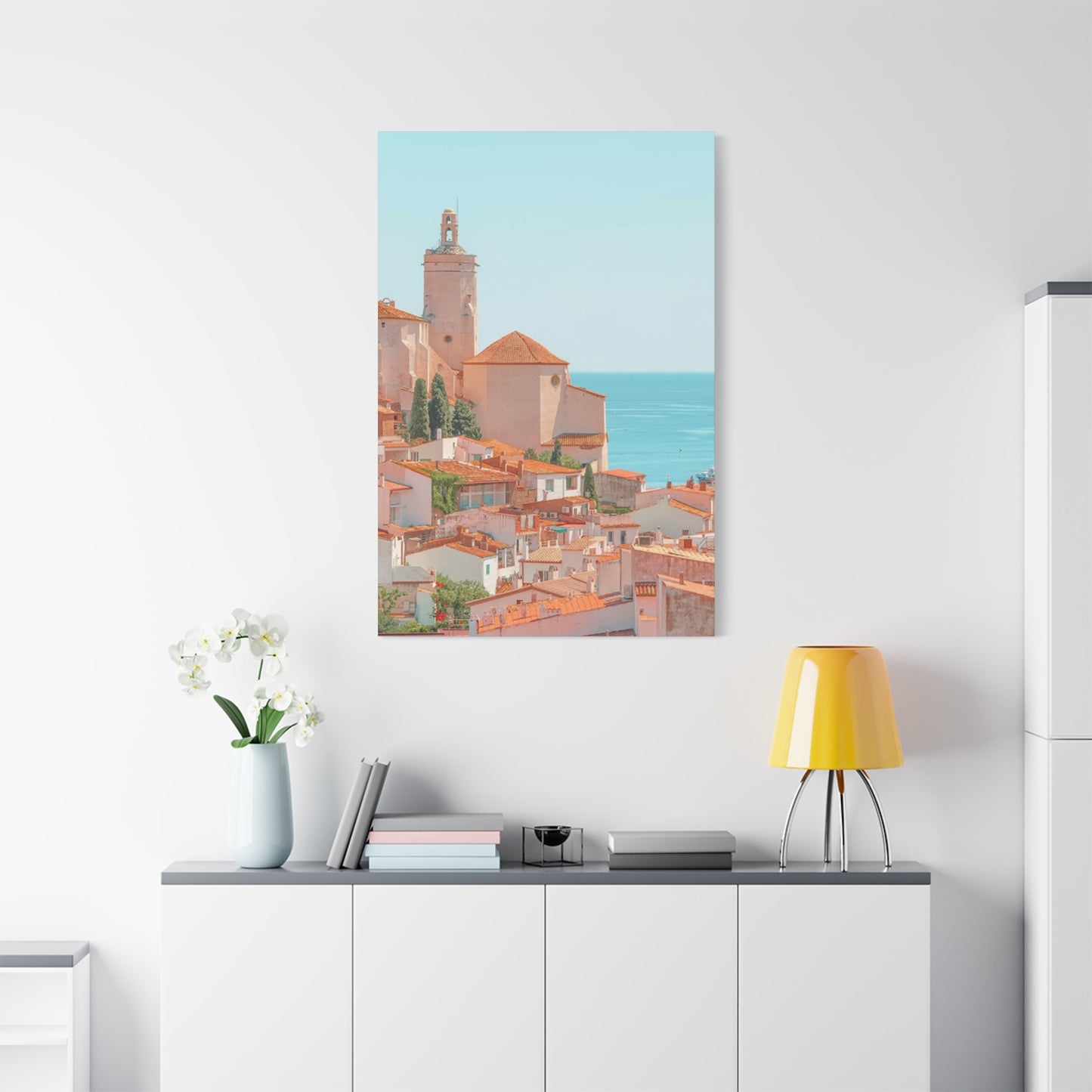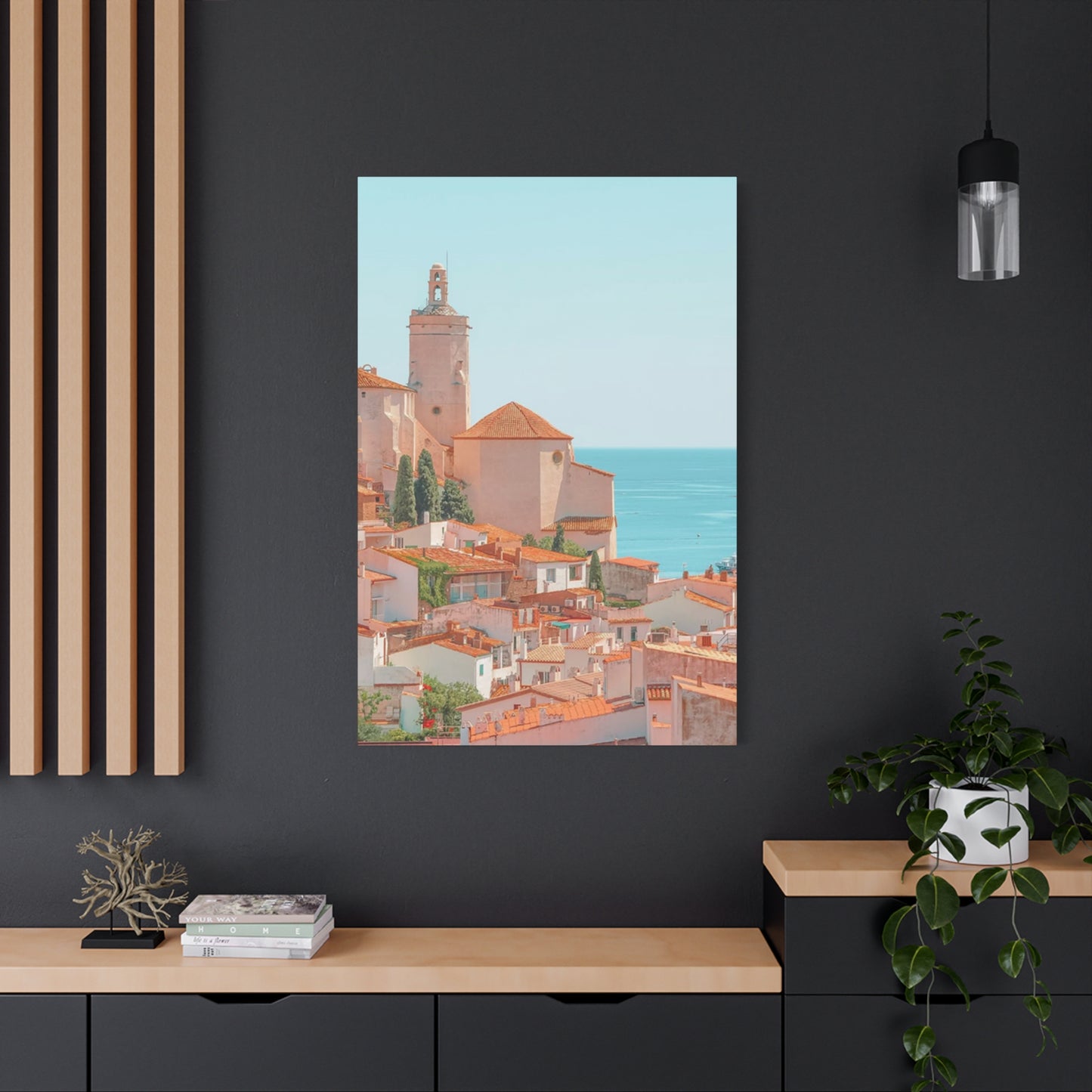Spain Architecture Wall Art: Bringing Iberian Beauty Into Your Home
Spain's architectural landscape represents one of the most diverse and captivating collections of building styles found anywhere in the world. From the surreal creations of visionary designers to the timeless structures built by ancient civilizations, the country offers endless inspiration for those seeking to enhance their living spaces with meaningful artwork. The practice of displaying architectural imagery in homes has evolved significantly, with Spanish buildings and cityscapes becoming increasingly popular choices for interior decoration enthusiasts who appreciate the intersection of history, culture, and artistic expression.
The allure of Spanish architectural art lies in its remarkable variety and the stories embedded within each structure. Every building, street corner, and plaza tells a narrative about the people who created it, the era in which it was constructed, and the cultural influences that shaped its design. When you choose to display these architectural treasures on your walls, you're not simply adding decoration to your space but creating a connection to centuries of human creativity and innovation. The visual impact of Spanish architecture transcends mere aesthetics, offering viewers a window into different time periods, artistic movements, and the unique character that defines the Iberian Peninsula.
Contemporary interior design increasingly recognizes the power of architectural imagery to transform living spaces. Unlike generic artwork, pieces featuring Spanish buildings and streetscapes carry inherent depth and meaning that sparks conversation and contemplation. These artworks serve multiple purposes within a home environment, functioning as focal points that draw the eye, conversation starters that engage guests, and personal reminders of travel experiences or cultural connections. The emotional resonance of architectural art creates lasting impressions that generic decorative pieces simply cannot match.
Modernist Marvels: Spain Architecture Wall Art
The modernist movement in Spain produced some of the most innovative and visually stunning structures ever conceived by human imagination. This architectural revolution, which flourished during the late nineteenth and early twentieth centuries, challenged conventional building practices and introduced organic forms, vibrant colors, and unprecedented creativity to urban landscapes. Displaying modernist Spanish architecture in your home through carefully selected wall art brings this revolutionary spirit into your daily environment, serving as a constant reminder of what human ingenuity can achieve when freed from traditional constraints.
Modernist architecture in Spain represents more than just buildings; it embodies a philosophical approach to design that prioritizes harmony between human habitation and natural forms. The movement's pioneers believed that architecture should be alive, breathing, and integrated with its surroundings rather than standing apart as isolated monuments. This philosophy manifested in structures that seem to grow from the earth itself, featuring undulating facades, nature-inspired ornamental details, and color schemes that reference the natural world. When captured in wall art, these qualities translate into pieces that energize spaces with dynamic visual interest and organic beauty.
The technical execution of modernist Spanish architecture presents unique challenges and opportunities for artists and photographers attempting to capture these structures. The complex curves, intricate surface treatments, and interplay of light and shadow across irregular facades require sophisticated compositional skills to represent effectively. Successful modernist architectural art balances the documentation of structural details with artistic interpretation, allowing viewers to appreciate both the technical mastery of the original architects and the creative vision of the artists who render these buildings in various media.
Incorporating modernist Spanish architectural art into residential or commercial spaces creates immediate visual impact through the inherent drama of the subject matter. The bold forms and unexpected geometries characteristic of this movement naturally draw the eye and command attention without requiring large scale or elaborate framing. These pieces work particularly well in contemporary interiors where their innovative spirit complements modern furnishings and design sensibilities. However, they also create compelling contrasts when placed in traditional settings, where their unconventional forms provide refreshing counterpoints to more conservative architectural elements.
The color palettes associated with modernist Spanish architecture offer tremendous versatility for interior design applications. Many iconic modernist structures feature brilliant mosaics, colored glass, and painted surfaces in jewel tones and earthy hues that can either coordinate with or accent existing color schemes. Art depicting these buildings can serve as inspiration for entire room palettes or provide strategic color punctuation in neutral environments. The natural variability in how different artists and photographers interpret these colors means that pieces featuring the same building can look remarkably different, allowing for personalized selection based on specific design needs.
The symbolic significance of displaying modernist Spanish architectural art extends beyond pure aesthetics into the realm of personal values and aspirations. These structures represent defiance of convention, pursuit of innovation, and commitment to artistic vision despite criticism and practical challenges. Choosing to feature such imagery in your environment makes a statement about your own openness to unconventional thinking and appreciation for boundary-pushing creativity. This symbolic layer adds depth to the viewing experience, transforming decorative choices into expressions of personal philosophy.
Modern printing technologies and artistic techniques have made high-quality reproductions of modernist Spanish architecture accessible to wider audiences than ever before. Advanced photographic equipment captures the intricate details and subtle color variations of these complex structures, while digital enhancement tools allow artists to adjust contrast, saturation, and composition to create optimal visual impact. Canvas prints, metal prints, and acrylic presentations each offer distinct advantages for displaying these dynamic subjects, with choices depending on desired aesthetic effects and viewing conditions in specific spaces.
Gaudí's Genius Captured on Canvas
Antoni Gaudí stands as perhaps the most recognizable name in Spanish architecture, with his distinctive vision creating structures that defy categorization and challenge viewers' expectations about what buildings can be. His work transcends mere construction to achieve something approaching sculptural art on an architectural scale. The biomorphic forms, vibrant mosaics, and spiritual symbolism that characterize his buildings have captivated audiences for over a century, making them among the most photographed and artistically rendered structures in the world. Wall art featuring Gaudí's creations brings this extraordinary vision into personal spaces, offering daily encounters with truly unique architectural achievement.
The genius of Gaudí's work lies in his ability to synthesize multiple influences into completely original expressions. His buildings incorporate Gothic structural principles, Moorish decorative traditions, Art Nouveau aesthetics, and natural forms observed in the Catalan landscape. This synthesis creates structures that feel both ancient and futuristic, familiar yet completely unprecedented. When artists attempt to capture these qualities in two-dimensional representations, they face the challenge of conveying not just visual appearance but the sense of wonder and discovery that characterizes direct experience of these buildings. Successful Gaudí-inspired wall art manages to preserve some of this magical quality, allowing viewers to sense the revolutionary nature of his vision.
The technical sophistication underlying Gaudí's seemingly organic designs provides endless fascination for those who study his work closely. His innovative use of hyperbolic paraboloids, catenary arches, and other geometric principles borrowed from nature allowed him to create spaces that are both structurally sound and visually stunning. Wall art that focuses on the technical aspects of his architecture appeals to viewers who appreciate the engineering brilliance behind the artistic vision. Detail shots of column capitals, ceiling treatments, and structural elements reveal the mathematical precision underlying apparently spontaneous organic forms, adding layers of appreciation for those who look beyond initial visual impact.
Color plays an absolutely central role in Gaudí's architectural vision and consequently in artistic representations of his work. His extensive use of trencadís, the mosaic technique employing broken ceramic tiles, created surfaces that shimmer with color and reflect light in constantly changing patterns. Capturing these color effects in wall art requires sensitivity to both the overall color schemes and the textural qualities that give these surfaces their distinctive character. Some artists emphasize the brilliant jewel tones and bold contrasts, while others focus on subtle color gradations and the interplay of light across irregular surfaces. Both approaches offer valid interpretations that can suit different interior design contexts.
The spiritual dimension of Gaudí's work, particularly evident in his religious structures, adds profound depth to artistic representations of his architecture. His buildings embody his deep Catholic faith and his belief that architectural design should elevate the human spirit and direct attention toward the divine. This spiritual quality can be conveyed through compositional choices that emphasize soaring vertical elements, dramatic lighting effects, or the contemplative atmosphere of interior spaces. Wall art that captures this dimension offers viewers not just visual beauty but opportunities for reflection and meditation, making these pieces particularly appropriate for spaces dedicated to rest and contemplation.
The international recognition of Gaudí's work and the iconic status of his most famous creations make them immediately recognizable to educated audiences worldwide. This recognizability carries both advantages and challenges for interior design applications. On one hand, these pieces serve as cultural touchstones that communicate sophistication and appreciation for architectural heritage. On the other hand, their familiarity means that presentations must offer fresh perspectives or exceptional execution to avoid feeling like tourist souvenirs. Successful Gaudí wall art balances accessibility with artistic interpretation, honoring the original while offering new ways of seeing and understanding these celebrated structures.
Contemporary artists continue to find new approaches to representing Gaudí's architecture, ensuring that this subject matter remains fresh and relevant. Abstract interpretations focusing on color and form rather than literal representation, experimental photographic techniques employing unusual angles or lighting conditions, and mixed-media approaches combining photography with painting or digital manipulation all offer alternatives to straightforward architectural documentation. These innovative approaches to familiar subjects allow homeowners to enjoy Gaudí-inspired art that feels contemporary and personal rather than merely commemorative.
Vibrant Spanish Street Scenes in Wall Art
Spanish streets possess a distinctive character that reflects centuries of urban development, cultural traditions, and the Mediterranean climate that encourages outdoor living. The vitality of Spanish street life, with its cafes, markets, and social interactions playing out in public spaces, creates endless opportunities for compelling visual documentation. Wall art featuring these dynamic environments captures not just physical structures but the essence of Spanish urban culture, bringing the energy and warmth of Iberian street life into interior spaces regardless of geographic location.
The architectural elements that define Spanish streets create strong visual frameworks for artistic representation. Narrow lanes lined with buildings featuring decorative balconies, colorful shutters, and ornate doorways provide natural compositional structure that artists can emphasize or abstract according to their vision. The vertical emphasis of multi-story buildings creates strong leading lines that draw the eye through compositions, while the rhythm of repeated architectural elements like windows and balconies establishes visual patterns that please the eye. These inherent compositional strengths make Spanish street scenes naturally suited to wall art applications.
Light plays a particularly important role in Spanish street photography and painting, with the intense Mediterranean sun creating dramatic contrasts between brilliantly illuminated surfaces and deep shadows. Artists working with Spanish street scenes often emphasize these dramatic lighting conditions, using them to create mood, define form, and direct viewer attention. Morning and evening light, when the sun strikes buildings at acute angles, produces especially compelling effects that painters and photographers actively seek. Wall art that successfully captures these lighting qualities transports viewers to specific times and places, creating powerful evocative responses that transcend mere visual documentation.
The human element in Spanish street scenes adds narrative dimension that purely architectural subjects may lack. Figures walking through narrow lanes, sitting at outdoor cafes, or interacting with their environment provide scale references that help viewers understand spatial relationships while also suggesting stories and connections. Some artists choose to include detailed human figures as important compositional elements, while others reduce people to abstracted forms or silhouettes that suggest presence without demanding attention. The level of human presence in street scene artwork affects its overall mood and the ways viewers engage with the image.
Color in Spanish street scenes ranges from the brilliant whites of Andalusian villages to the warm ochres and terracottas of Mediterranean coastal towns to the varied palettes of urban neighborhoods where buildings in different periods and styles create eclectic visual environments. This color diversity allows for careful selection of pieces that either complement or provide strategic contrast to existing interior color schemes. Some street scene artwork emphasizes color as a primary subject, celebrating the visual richness of Spanish urban environments, while other pieces adopt more restrained palettes that emphasize form, light, and atmospheric qualities over pure color impact.
The level of detail in Spanish street scene artwork significantly affects its visual impact and appropriate viewing distance. Highly detailed renderings reward close inspection, revealing small architectural elements, textural variations, and subtle color modulations that may not be apparent from across a room. These detailed pieces work well in spaces where viewers will be relatively close to the artwork, such as hallways, reading nooks, or dining areas. More impressionistic approaches that emphasize overall atmosphere and compositional structure rather than fine detail suit larger spaces where artwork will be viewed from greater distances, such as living rooms or open-concept areas.
Contemporary artistic approaches to Spanish street scenes extend beyond traditional painting and photography to include digital art, mixed media, and experimental techniques that offer fresh perspectives on familiar subjects. Digital artists can manipulate photographic source material to emphasize certain qualities, add painterly effects, or create entirely new color relationships while maintaining recognizable subject matter. Mixed-media artists might combine photographic elements with painted or collaged components, creating layered compositions that reference multiple artistic traditions. These innovative approaches ensure that Spanish street scene artwork remains vibrant and relevant for contemporary audiences.
Iconic Landmarks: Spain on Your Walls
Spain's most famous architectural landmarks represent pinnacles of human achievement across multiple historical periods and stylistic movements. These structures have transcended their original functions to become symbols not just of their cities but of Spanish culture more broadly. Displaying artwork featuring these iconic buildings creates immediate connections to specific places and the cultural heritage they represent, making them particularly powerful choices for people with personal connections to Spain or those who wish to express cosmopolitan sophistication through their decorating choices.
The challenge of creating compelling artwork featuring extremely famous landmarks lies in finding fresh perspectives on subjects that have been photographed and painted countless times. Successful artists approach these familiar structures with unique visions that reveal overlooked details, unexpected angles, or interpretive approaches that transform documentary representation into artistic statement. Some focus on small portions of larger structures, creating abstract compositions from architectural details that may be recognizable to informed viewers but not immediately obvious. Others employ unusual lighting conditions, seasonal variations, or creative framing to present well-known buildings in unfamiliar ways that challenge viewer expectations.
The historical significance of Spanish architectural landmarks adds layers of meaning to artistic representations beyond pure visual appeal. Each iconic structure embodies specific historical moments, political circumstances, artistic movements, or cultural developments that shaped Spanish society. Wall art featuring these buildings can serve educational purposes, prompting conversations about history and culture while also functioning as decorative elements. This dual functionality makes landmark-focused artwork particularly appropriate for homes where learning and cultural engagement are valued alongside aesthetic considerations.
The scale of many Spanish architectural landmarks presents both opportunities and challenges for artistic representation. Massive structures like cathedrals and palaces possess grandeur that can be difficult to convey in artwork sized for residential display. Artists must choose whether to present entire structures in ways that necessarily reduce visual impact of individual details or focus on portions of buildings that can be rendered at larger scale, sacrificing comprehensive representation for greater detail and drama. Both approaches have merits, with choices depending on the specific artwork's purpose and the preferences of those selecting pieces for their spaces.
The cultural associations people hold regarding famous Spanish landmarks significantly affect how they respond to artistic representations. For those who have visited these sites, artwork can function as memory trigger, recreating emotional experiences and recalling specific moments. For those who aspire to visit Spain, these images represent aspirational destinations and connections to places they hope to experience. Even for viewers without personal Spanish connections, famous landmarks carry associations with romance, history, adventure, or cultural sophistication that affect how the artwork functions within a space and what meanings viewers derive from it.
The diversity of Spain's iconic landmarks means that collections focusing on this theme can showcase remarkable stylistic variety while maintaining thematic coherence. Gothic cathedrals, Moorish palaces, modernist masterpieces, and contemporary structures each offer distinctive visual qualities and represent different aspects of Spanish cultural development. A collection incorporating multiple landmark styles tells a more comprehensive story about Spanish architectural achievement than focusing on a single period or style, creating visual interest through variety while maintaining conceptual unity through geographic focus.
Quality considerations become particularly important when selecting artwork featuring famous landmarks, as poor execution or derivative composition can reduce powerful subjects to tourist cliche. Professional photography employing high-quality equipment and sophisticated post-processing, paintings by accomplished artists who bring technical skill and personal vision to familiar subjects, or limited-edition prints that ensure exclusivity all help maintain artistic integrity when working with extremely well-known subject matter. Investment in quality pieces ensures that iconic landmark artwork functions as legitimate art rather than mere souvenir reproduction.
From Barcelona to Madrid: Architectural Prints
The architectural contrast between Barcelona and Madrid reflects broader differences in regional character, historical development, and cultural orientation that make these two cities fascinating subjects for comparative study. Barcelona's position as capital of Catalonia, its Mediterranean location, and its history as a commercial center produced an architectural character quite distinct from Madrid's role as political capital, its position in the geographic heart of the country, and its more formal institutional orientation. Wall art that explores architecture from both cities offers opportunities to celebrate this diversity and create visual dialogue between different aspects of Spanish urban development.
Barcelona's architectural identity centers heavily on the modernist movement and the work of its most famous practitioners. The city's built environment reflects Catalan nationalism, commercial prosperity during the late nineteenth and early twentieth centuries, and artistic movements that challenged convention and embraced organic forms. These qualities manifest in buildings that prioritize visual drama, ornamental richness, and integration with natural forms. Architectural prints focusing on Barcelona often emphasize these characteristics, presenting structures that seem to grow from the urban fabric rather than being imposed upon it, creating artwork with dynamic, flowing qualities that energize interior spaces.
Madrid's architectural character reflects its role as seat of royal power and national government, resulting in formal plazas, monumental buildings, and carefully planned vistas that express authority and permanence. The city's architecture spans from medieval remnants through Habsburg and Bourbon imperial structures to contemporary developments, creating a layered urban environment where different periods coexist. Prints featuring Madrid architecture often emphasize symmetry, classical proportions, and the relationship between buildings and formal public spaces, creating artwork with more ordered, geometric qualities that complement traditional interior design approaches.
The color palettes associated with these two cities offer distinct possibilities for interior design applications. Barcelona's modernist structures feature vibrant mosaics, colored glass, and painted surfaces that create intensely colorful artwork capable of serving as room focal points or color inspiration for broader design schemes. Madrid's architecture, while certainly not colorless, tends toward more restrained palettes of stone, brick, and stucco that create artwork with subtler, more sophisticated color relationships. These different color characters make Barcelona-focused pieces suited to energetic, creative environments while Madrid imagery works well in more formal or contemplative spaces.
Creating a cohesive collection incorporating architecture from both cities requires thoughtful curation that identifies unifying elements while celebrating differences. Thematic approaches focusing on specific subjects like doorways, windows, or rooflines across both cities can create visual connections despite stylistic differences. Alternatively, deliberate contrast can be employed, juxtaposing Barcelona's organic modernism against Madrid's classical formality to create tension and dialogue between pieces. The curatorial approach affects how collections read as unified statements versus assemblages of individual pieces.
The social and cultural dimensions of urban life in Barcelona versus Madrid provide additional layers of meaning for architectural artwork featuring these cities. Barcelona's reputation for creative innovation, its Mediterranean lifestyle orientation, and its complicated relationship with Spanish national identity all color perceptions of its architecture. Madrid's position as national capital, its more traditionally Spanish character, and its cosmopolitan sophistication affect how viewers interpret its buildings. These associations influence how artwork functions in spaces and what it communicates about inhabitants' values and cultural orientations.
Technical considerations for printing architectural imagery from these cities involve balancing documentary accuracy with artistic enhancement. The brilliant colors and complex details of Barcelona's modernist structures require printing technologies capable of reproducing vibrant hues and fine detail without oversaturation or loss of subtlety. Madrid's architecture, with its reliance on stone and plaster surfaces, demands printing approaches that can render subtle tonal variations and textural qualities that give these materials their distinctive character. Professional printing services specializing in architectural photography understand these requirements and can advise on optimal approaches for different subjects and presentation formats.
Minimalist Spanish Architecture in Wall Art
The minimalist approach to depicting Spanish architecture strips away extraneous detail to focus on essential forms, geometric relationships, and fundamental compositional elements. This reductive strategy can reveal underlying structural logic and design principles that might be obscured in more comprehensive representations. Minimalist Spanish architectural art appeals particularly to contemporary design sensibilities that value simplicity, clarity, and carefully considered negative space, making these pieces versatile choices for modern interiors where visual restraint is prized over elaborate ornamentation.
The process of creating minimalist architectural art requires careful analysis to identify which elements are essential to conveying the subject's character and which can be eliminated without loss of recognizability or impact. Artists working in this mode must understand their subjects deeply enough to make informed decisions about what to include and what to omit. This selective process results in compositions that often feel more abstract than documentary, even when specific buildings remain identifiable. The tension between abstraction and representation gives minimalist architectural art its distinctive character and much of its visual appeal.
Color plays a crucial role in minimalist Spanish architectural art, with limited palettes forcing viewers to focus on form and composition rather than chromatic variety. Many minimalist pieces employ monochromatic or near-monochromatic color schemes that emphasize tonal variation rather than hue contrast. Others adopt restricted palettes using just two or three colors to create simple, bold statements with maximum impact. The restrained use of color in minimalist work makes these pieces particularly suitable for integration into carefully controlled interior color schemes where additional complexity would create visual clutter rather than interest.
Light and shadow become primary compositional tools in minimalist architectural representation, defining forms through contrast rather than through detailed rendering. The dramatic interplay of light and dark that characterizes Mediterranean architecture under intense sunlight translates beautifully to minimalist treatments that reduce complex facades to patterns of illumination and shade. These light-focused compositions possess strong graphic qualities that work effectively in contemporary interiors while maintaining clear connections to their architectural subjects.
The relationship between positive and negative space receives particular emphasis in minimalist architectural art, with empty areas of composition treated as active elements rather than mere background. This approach reflects fundamental architectural concerns about the relationship between solid and void, enclosed and open space. Minimalist artwork that successfully employs negative space creates visual breathing room that can help balance busier areas in interior design schemes, providing calm counterpoints to more complex elements.
Minimalist Spanish architectural art serves multiple functions within contemporary interiors. These pieces can act as subtle nods to Spanish design heritage without dominating spaces or demanding specific decorative contexts. Their restrained aesthetic allows them to integrate smoothly with various design styles, from ultra-modern to transitional approaches that blend traditional and contemporary elements. This versatility makes minimalist architectural pieces safe choices for those uncertain about committing to more dramatic artistic statements, though their apparent simplicity should not be mistaken for lack of sophistication or visual interest.
The production of minimalist architectural prints involves technical decisions about printing processes, materials, and presentation that significantly affect final visual impact. Clean, sharp lines and smooth tonal gradations require high-quality printing equipment and careful color management. The choice between matte and glossy finishes affects how light interacts with the artwork, with matte surfaces generally preferred for minimalist pieces to avoid distracting reflections. Simple, unobtrusive framing or frameless presentation methods complement the minimalist aesthetic, keeping focus on the artwork itself rather than its mounting.
Historic Spanish Cathedrals as Art Pieces
Spanish cathedrals represent some of the most ambitious architectural achievements in Western civilization, combining structural innovation with artistic embellishment on scales that still inspire awe centuries after their construction. These sacred spaces embody the religious devotion, political power, and artistic ambition of the periods that produced them, resulting in buildings of tremendous complexity and beauty. Wall art featuring cathedral architecture brings the grandeur and spiritual resonance of these spaces into private environments, creating opportunities for contemplation and appreciation of human creative capacity at its most expansive.
The Gothic cathedrals of Spain, with their soaring vertical proportions, intricate stone tracery, and spectacular stained glass windows, present artists with subjects of tremendous visual richness. Capturing the essential qualities of Gothic architecture in two-dimensional artwork requires sensitivity to the interplay of structure and light that defines these spaces. Exterior views might emphasize the upward thrust of buttresses and spires, while interior perspectives often focus on the luminous quality created by filtered light through colored glass. Both approaches attempt to convey the transcendent aspirations that motivated cathedral builders and the technical mastery required to realize such ambitious visions.
Spanish cathedrals also showcase significant Romanesque, Renaissance, and Baroque elements, reflecting the centuries-long construction periods typical of these massive projects and the evolving aesthetic preferences that influenced their development. This architectural layering creates buildings of tremendous visual complexity where different styles and periods coexist in single structures. Artwork that acknowledges this complexity can focus on specific architectural elements representing particular periods or attempt comprehensive views that showcase stylistic evolution within individual buildings. Both approaches offer valuable perspectives on how architectural traditions develop and interact.
The ornamental programs of Spanish cathedrals, featuring sculpture, metalwork, woodcarving, and other decorative arts integrated with architectural elements, provide subjects for artwork focusing on detailed craftsmanship rather than overall structure. Close-up views of carved capitals, sculptural ensembles, or ornate screens reveal the extraordinary skill of medieval and Renaissance artisans while creating compositions with abstract qualities that appeal to contemporary aesthetic sensibilities. These detail-focused pieces offer alternatives to comprehensive architectural views, allowing appreciation of cathedral art on intimate scales appropriate for residential display.
The spiritual dimension inherent in cathedral architecture adds layers of meaning that extend beyond pure aesthetic appreciation. These buildings were designed to inspire religious devotion and create environments conducive to worship and contemplation. Artwork capturing cathedral interiors often preserves some of this contemplative quality, creating pieces that function as focal points for reflection rather than merely decorative elements. This spiritual resonance makes cathedral art particularly appropriate for quiet spaces designated for reading, meditation, or rest.
The technical challenges of photographing or painting cathedral architecture stem from the extreme vertical proportions, vast interior volumes, and lighting conditions characteristic of these structures. Extreme wide-angle lenses introduce distortion that must be corrected or intentionally employed for artistic effect. Interior photography requires managing the extreme contrast between brilliant light filtering through windows and dim shadowed areas, often necessitating advanced techniques like exposure bracketing and digital blending. Artists working in traditional media face comparable challenges in representing vast spaces and complex details on limited picture surfaces.
Contemporary approaches to cathedral architectural art range from straightforward documentation preserving historical and architectural information to highly interpretive treatments that use cathedral elements as jumping-off points for personal artistic exploration. Some artists employ digital manipulation to enhance colors, adjust proportions, or add elements that never existed in the actual structures, creating fantasy architecture inspired by but not bound to reality. These various approaches serve different purposes and appeal to different audiences, with traditional documentation satisfying those who value historical accuracy while interpretive work attracts viewers interested in artistic vision as much as architectural subject matter.
Colorful Facades: Spain Wall Art Ideas
The vibrantly painted facades characteristic of many Spanish towns and cities create visual spectacles that have inspired artists and photographers for generations. The tradition of colorful exterior walls reflects practical considerations like climate control and building identification alongside purely aesthetic motivations to create visually engaging urban environments. Wall art celebrating these colorful facades brings the exuberant spirit of Spanish street life into interior spaces, injecting energy and warmth that can transform the mood of entire rooms.
The color traditions vary significantly across different Spanish regions, with coastal Mediterranean areas favoring brilliant whites accented by intense blues and greens, Andalusian villages employing whites contrasted with ochres and terracottas, and northern regions using earthier palettes that reference local materials and cooler climate conditions. This regional variation means that facade-focused artwork can reference specific geographic areas, making pieces particularly meaningful for people with connections to particular Spanish locales. Understanding these regional color traditions allows for informed selection of artwork that accurately represents specific places or combines elements from different areas to create composite visions of Spanish color.
The practical functions of colorful facades, including solar reflection, visual way-finding, and property differentiation in dense urban areas, coexist with purely decorative motivations to create buildings that are simultaneously functional and beautiful. This marriage of utility and aesthetics reflects broader Mediterranean cultural values that resist separating practical necessities from opportunities for beauty and personal expression. Artwork that captures this quality communicates not just visual information but cultural attitudes toward the relationship between form and function, making these pieces carriers of deeper meaning beyond surface appearance.
The interaction between colorful facades and natural light creates constantly changing visual experiences as sun angles shift throughout the day and seasons. Artists capturing these subjects must choose specific lighting conditions that best express their vision for the piece, with choices profoundly affecting mood and visual impact. Harsh midday light creates strong contrasts and saturated colors that emphasize the brilliance of painted surfaces. Softer morning and evening light produces more subtle color relationships and gentler contrasts that may feel more restful and contemplative. Overcast conditions reduce contrast while allowing subtle color variations to become more apparent.
The compositional challenges of facade-focused artwork involve managing the tension between architectural documentation and artistic interpretation. Straightforward frontal views clearly communicate structural information and allow direct appreciation of color relationships but may feel static or documentary. Angled perspectives introduce dynamic diagonal lines and create more energetic compositions but may sacrifice clarity of architectural reading. Close crops focusing on portions of facades create abstracted compositions emphasizing color and pattern over recognizable architecture, appealing to viewers who prioritize decorative impact over representational accuracy.
The scale at which colorful facade artwork is displayed significantly affects its impact and appropriate placement within interiors. Large-scale pieces featuring expansive views of multiple buildings create dramatic focal points suitable for prominent walls in living areas or entryways. Medium-sized works showing individual building facades or architectural details work well in diverse locations including hallways, dining areas, or bedrooms. Small pieces capturing architectural fragments or color studies can be grouped into collections that create impact through accumulation while allowing individual pieces to be appreciated for their specific qualities.
The psychological effects of colorful facade artwork extend beyond pure visual pleasure to influence mood and energy levels in spaces where these pieces are displayed. Bright, saturated colors stimulate emotional responses that can energize spaces and lift spirits, making vibrant facade art particularly effective in areas designated for social interaction or creative activity. More subdued color relationships create calmer effects suitable for spaces intended for relaxation or concentration. Understanding these psychological dimensions helps in matching artwork to specific rooms and intended uses within the home.
Moorish Influences in Spanish Architecture Prints
The centuries of Islamic rule in portions of the Iberian Peninsula left indelible marks on Spanish architectural traditions, creating a distinctive synthesis of Islamic, Christian, and Jewish design principles known as Mudéjar architecture. The geometric patterns, horseshoe arches, intricate tilework, and emphasis on creating paradisiacal gardens that characterize Moorish architecture continue to influence Spanish building traditions and inspire contemporary artists. Wall art featuring Moorish-influenced architecture connects viewers to this fascinating cultural synthesis while providing visually stunning decoration characterized by mathematical precision and ornamental richness.
The geometric patterns fundamental to Islamic architectural decoration reflect both religious prohibitions against representational imagery and deep fascination with mathematical relationships and universal order. These patterns create mesmerizing visual effects through repetition, symmetry, and complex interlocking forms that seem to extend infinitely beyond their physical boundaries. Artwork focusing on these geometric elements can function as almost abstract compositions that appeal to contemporary design sensibilities while maintaining clear connections to architectural tradition. The mathematical sophistication underlying these patterns adds intellectual dimension to their visual appeal, making them conversation pieces that engage minds as well as eyes.
The distinctive horseshoe arches and scalloped dome profiles characteristic of Moorish architecture create immediately recognizable silhouettes that signal cultural connections even when other details are not visible. These structural elements combine functional necessity with symbolic meaning, with arches representing passages between different states or realms and domes symbolizing the heavens. Artwork emphasizing these elements captures essential qualities of Moorish architecture while creating compositions with strong graphic impact. The rhythmic repetition of arched forms in courtyard arcades or prayer halls generates visual patterns that translate beautifully to two-dimensional representation.
The tilework traditions associated with Moorish Spanish architecture represent some of the most accomplished ceramic work in architectural history. The geometric tile patterns, often employing limited color palettes of blues, greens, ochres, and whites, create surfaces that shimmer with color while displaying extraordinary technical precision. Artwork capturing these tile compositions can focus on overall pattern effects or zoom in on details revealing individual tile shapes and their assembly into larger designs. The jewel-like qualities of well-executed architectural tilework translate beautifully to prints on glossy or metallic surfaces that enhance color vibrancy and reflective qualities.
The garden courtyards central to Moorish architectural complexes represent idealized visions of paradise, combining water features, vegetation, architectural elements, and decorative programs into unified compositions designed to engage all the senses. While visual artwork obviously cannot convey the sounds of water or the scent of orange blossoms, skilled artists can suggest these multisensory qualities through composition, color, and the evocation of specific atmospheric conditions. Artwork featuring these garden spaces creates opportunities to bring the serenity and beauty of these carefully designed environments into interior spaces far from their Spanish origins.
The cultural complexity of Moorish Spanish architecture, reflecting the coexistence and interaction of Islamic, Christian, and Jewish communities during certain historical periods, adds layers of meaning that extend beyond pure aesthetic appreciation. These structures represent times when different religious and cultural traditions influenced each other, creating hybrid forms that transcended simple categories. Displaying artwork featuring this architecture can symbolize values like cultural exchange, tolerance, and the creative possibilities that emerge when different traditions interact. These symbolic dimensions make Moorish-influenced architectural art particularly meaningful for viewers who embrace multicultural perspectives.
Contemporary artists working with Moorish architectural subjects employ various approaches ranging from careful documentation preserving historical detail to free interpretation using traditional elements as inspiration for new creative works. Some focus on isolated architectural details, creating compositions that border on abstraction while remaining rooted in specific structures. Others use digital manipulation to enhance colors, adjust patterns, or create fantasy architecture inspired by historical precedents. These diverse approaches ensure continued relevance and fresh perspectives on architectural traditions that might otherwise feel purely historical.
Urban Spanish Skylines on Canvas
Spanish cities present distinctive skyline profiles shaped by their topography, historical development, and the architectural character of their most prominent buildings. These urban panoramas compress centuries of construction and countless individual design decisions into unified visual compositions that serve as shorthand for entire cities. Wall art featuring Spanish skylines brings the energy and identity of urban environments into interior spaces, creating connections to specific places while also celebrating the broader phenomenon of cities as humanity's most complex and ambitious creations.
The topographic variety of Spanish cities creates skylines with dramatically different characters. Coastal cities like Barcelona and Valencia present relatively horizontal skylines stretching along shorelines, punctuated by church towers, modern towers, and distinctive landmarks. Hill cities like Toledo or Granada cascade down slopes, creating stacked compositions where foreground buildings frame more distant structures. Cities in flatter terrain like Seville and Madrid display skylines where individual prominent structures like cathedrals or skyscrapers create clear focal points rising above more uniform surrounding development. These different topographic contexts require different compositional approaches to capture effectively.
The time of day when skyline photography or painting occurs dramatically affects the mood and visual character of resulting artwork. Dawn and dusk provide opportunities for dramatic silhouettes with sky color providing the primary visual interest. Daytime views under clear skies emphasize architectural detail and the three-dimensional modeling created by sunlight striking buildings. Night skylines featuring illuminated structures create dramatically different impressions, with artificial lighting defining forms against dark skies and creating color through light rather than through surface treatments. Each lighting condition serves different aesthetic purposes and creates different emotional responses.
The choice of vantage point for skyline compositions significantly affects how cities read and which structures receive emphasis. Distant elevated viewpoints compress depth and emphasize overall skyline profiles against sky backgrounds, creating compositions with strong horizon lines and simplified architectural forms. Closer viewpoints from mid-distance locations reveal more architectural detail while still maintaining comprehensive views. Street-level perspectives looking upward toward prominent structures create more dramatic compositions emphasizing vertical scale but sacrifice comprehensive city views. Each viewpoint offers distinct advantages and creates different relationships between viewer and subject.
The inclusion or exclusion of foreground elements in skyline compositions affects how viewers relate to the depicted cityscape. Foreground elements like parks, water features, or neighboring buildings provide visual entry points into compositions and establish scale relationships that help viewers understand the size of more distant structures. However, foreground elements also compete for attention and can complicate compositions. Many successful skyline artworks carefully balance the need for compositional structure provided by foreground elements against the desire for unobstructed views of skyline features themselves.
Conclusion
Spain Architecture Wall Art: Bringing Iberian Beauty Into Your Home reveals how the spirit of Spain’s architectural mastery can transcend geography and time to enrich your personal living space. Spanish architecture is more than just an arrangement of stone, color, and pattern—it’s a living story of culture, craftsmanship, and passion. From the detailed arches of Moorish palaces to the modernist elegance of Gaudí’s creations, every brushstroke in Spain-inspired wall art carries centuries of artistic heritage and emotional depth.
Bringing this Iberian beauty into your home means more than simply hanging artwork—it’s about curating an atmosphere that embodies history, sunlight, and rhythm. Spanish architecture wall art often highlights rich details: ornate tile mosaics, sunlit courtyards, rustic village homes, and grand cathedrals glowing in the Mediterranean light. Each piece becomes a visual celebration of life’s vibrancy, offering warmth and soul that breathe energy into any room. The earthy hues, deep blues, and terracotta tones that dominate Spanish architectural imagery radiate an inviting and timeless charm.
One of the most alluring aspects of Spain-inspired wall art is its versatility. Whether you live in a modern apartment or a traditional home, this style seamlessly integrates with diverse interiors. A canvas of Seville’s Alcázar or Barcelona’s Park Güell adds flair to minimalist spaces, introducing warmth through cultural storytelling. Meanwhile, prints featuring rustic Andalusian streets or sun-baked stone facades can enrich farmhouse or bohemian settings, adding a layer of authenticity and character. Spanish architecture is inherently eclectic—it harmonizes different eras and influences, from Moorish and Romanesque to Gothic and modernism, offering infinite creative inspiration for contemporary design.
Lighting and placement also play a crucial role in showcasing the grandeur of Spanish architectural art. Natural light enhances the vibrant colors, reflecting the brightness of the Mediterranean sun. In evening settings, soft ambient lighting brings depth to textures and shadows, mirroring the romantic glow of Spanish twilight. Whether displayed in a hallway, living room, or dining area, this art form creates focal points that tell stories—stories of cultural fusion, artistry, and passion for life.
Beyond aesthetics, Spain architecture wall art captures emotion and movement. It reflects a culture that values balance between art and everyday living—a culture where design is not just visual, but spiritual. The bold geometry of Islamic-inspired patterns, the expressive curves of Catalan modernism, and the harmony of rural Spanish villages all share one common essence: a celebration of connection—between people, nature, and art. By introducing these designs into your space, you’re not just decorating your walls; you’re inviting the Iberian philosophy of beauty, warmth, and community into your home.
Furthermore, Spain-inspired wall art can serve as an elegant link between past and present. Historical buildings, such as the Alhambra or the Sagrada Família, symbolize both timeless tradition and ongoing creativity. Hanging their artistic representations at home is a way of honoring innovation that endures through centuries. These masterpieces remind us that architecture is more than structure—it’s emotion captured in form. Every detail, from carved archways to intricate tilework, embodies humanity’s desire to leave behind something meaningful and lasting.

















